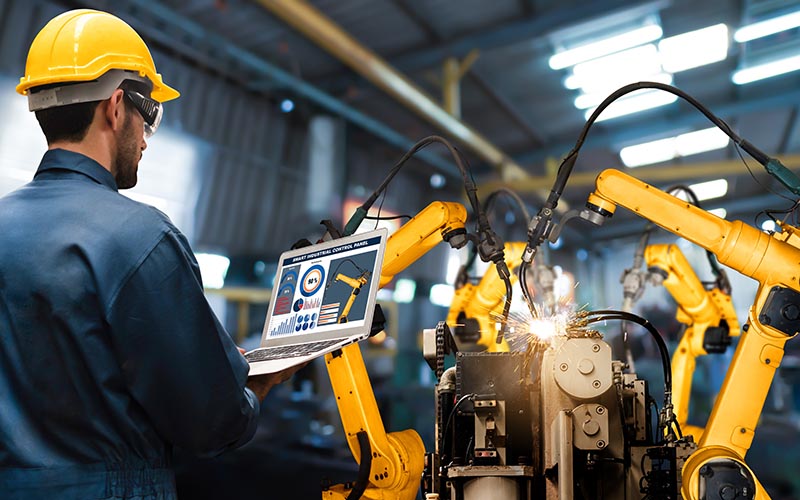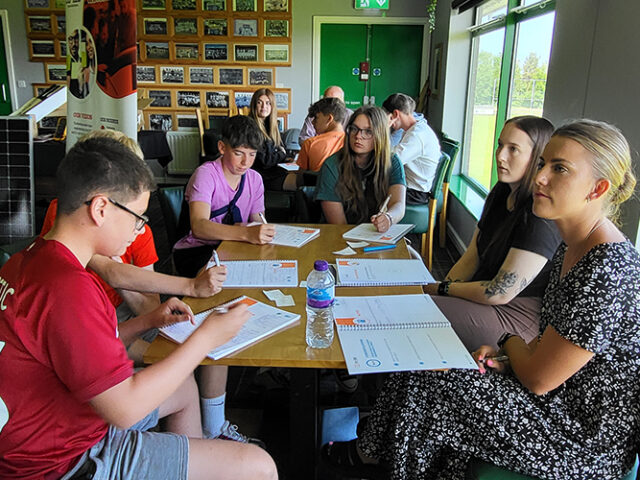In the fast-paced world of technological advancements, robotics and automation have emerged as the driving forces behind transformative changes across various engineering and tech disciplines. These cutting-edge technologies are revolutionising industries, streamlining processes, and reshaping the way we interact with machines. As we embark on this exploration of robotics and automation, we will unveil their profound impact on sectors like manufacturing, healthcare, transportation, and beyond. This article aims to highlight the significance of these technologies for students as they prepare for their future careers in a technology-driven world.
Revolutionising industries
Robotics and automation have continually surpassed conventional methodologies and brought about a new era of efficiency and innovation in various fields. Within manufacturing robotics have fundamentally changed the industry, enabling automation of repetitive and complex tasks. From robotic arms on assembly lines to collaborative robots working alongside humans, automation has increased productivity, reduced errors, and enhanced overall manufacturing efficiency. Robots are also making significant strides in the healthcare sector, assisting surgeons in delicate procedures, automating medication dispensing, and aiding in rehabilitation therapy. Automation in healthcare enhances precision, reduces human error, and improves patient outcomes. Meanwhile, autonomous vehicles are also becoming a growing reality, transforming the transportation industry. From self-driving cars to drones for delivery services, automation is making transportation safer and more efficient while paving the way for smart and sustainable mobility solutions.
Real-world applications of robotics and automation
The practical applications of robotics and automation is an ever-growing list, as the technologies advance so to does the application potential. These technologies are seen across a variety of different industries, which often opens the door for young engineers looking for transdisciplinary work. Here are just a few examples of where robotics and automation have taken roots:
Agriculture – Agricultural robots are being deployed to handle tasks such as planting, harvesting, and monitoring crops. Automation in agriculture optimises resource utilisation, increases crop yields, and helps address labour shortages.
Warehousing and logistics – Robots are revolutionising the warehousing and logistics industry by automating inventory management, order picking, and packing. Automation streamlines the supply chain, reduces fulfilment times, and improves accuracy in order processing.
Manufacturing – In modern manufacturing facilities, robotics and automation are extensively used to perform precise and repetitive inspection tasks, ensuring the quality and consistency of products. Automated inspection systems equipped with advanced sensors and cameras can quickly and accurately detect defects, deviations, and inconsistencies in manufactured components and products.
Once again, this is just a very slim sample of the overall potential of robotics and automation, chances are any STEM-based discipline you choose to go into will include one of these technologies to some capacity.
Being mindful of robotics and automation as a student
Understanding the significance of robotics and automation is vital for students preparing for their future careers. Doing so will able you to make informed decisions on your future and implement these emerging technologies into your career path to get one step ahead of the competition.
As previously discussed, robotics and automation have become essential in various industries, and students with expertise in these technologies are in high demand. Embracing these emerging technologies opens doors to exciting career opportunities. Proficiency in robotics and automation demands collaboration across diverse fields, from engineering and programming to artificial intelligence and machine learning. Developing transdisciplinary skills empowers students to tackle complex challenges.
Educational institutions play a crucial role in preparing students for careers in robotics and automation. Integrating these technologies into curricula and offering specialised courses provide hands-on experience and knowledge needed for success.
Final notes
Robotics and automation have ushered in a new era of possibilities, revolutionising engineering and tech disciplines across industries. From manufacturing to healthcare and transportation, these technologies continue to reshape the way we work and interact with the world around us. As students prepare for their future careers, understanding the significance of robotics and automation is crucial. By embracing these emerging technologies, students can pave the way for innovation, contribute to groundbreaking developments, and positively impact society in a tech-driven world.




